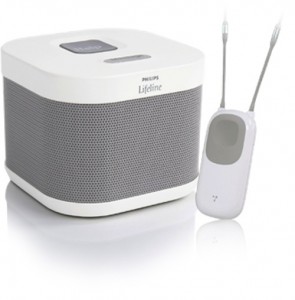
Philips GoSafe: The latest PERS offering from Philips Lifeline. Like every other commercially available PERS offering, it does not claim to prevent falls.
According to the CDC, falls are the number one cause of injury death among older adults and the number one reason for hospital admissions for trauma. Falls are a serious problem for older people living at home, and a burden on our healthcare system as well: the CDC estimates the total medical cost of falls in 2010 was $30 billion.
Falls are also an area where a lot of mobile health innovators are focusing their attention, including the remote monitoring and telemedicine markets. Sensors, pendants, and panic buttons on phones are a great comfort and can improve outcomes, since they allow victims of a fall to get help right away, rather than being trapped for a long time. But the real game changer in mobile health would be technology that actually prevents falls.
Remote monitoring can also be preventative because falls don't happen out of the blue. They're often a result of a slow decline in balance that older people might not even notice. Technology that can detect subtle changes in an older person's gait can alert a doctor or caregiver of the increased likelihood of a fall before it happens.
Here's a roundup of technologies that are tackling the tricky science of fall prevention.
Sensors in Shoes

When MobiHealthNews looked at this space back in 2009, two of the most promising new developments were sensor-embedded shoes. AT&T was working on a prototype of "smart slippers" using technology from startup 24Eight. These shoes would be equipped with sensors that could detect slight changes from a patient's ordinary foot movement and transmit a warning to a doctor or caregiver.

Around the same time, then-MIT student, now Harvard fellow Erez Leiberman developed a sensor-laden iShoe which garnered a lot of press attention, and was, last we heard, being pilot tested by healthcare system Ohio Health and due out in 2010.
For some reason, neither of these products has emerged in the market. In fact, Laurie Orlov, who blogs about aging in place technology, pointed to the iShoe in a 2011 post lamenting how technology makes big news at universities and then disappears. A spokesman from AT&T declined to comment on the status of their product, but suggested there might be more information available soon.



















